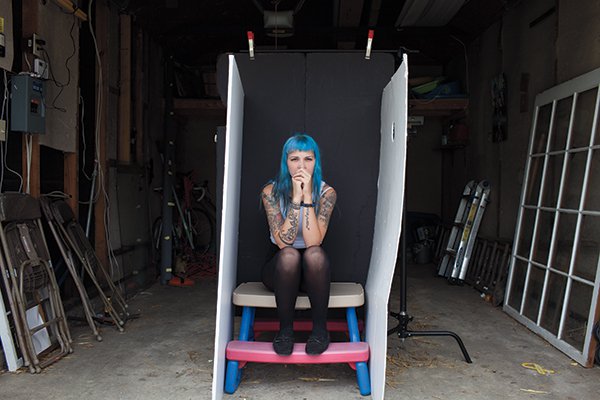Follow these steps by professional photographer Nick Fancher.
With his help you’re going to change your portraiture dramatically – right there in your (or your clients’) garage. You will not even need a single flash or another light source; natural light will be more than enough to create these interesting looks.
The reason why a garage is great for this kind of setup is that it allows you to place your subject closer or further away from the bright, outdoor light, depending on how much light you want in your subject’s eyes or how even you want the light to appear. For example, if the subject is right at the edge of the garage, just out of the sun, the exposure will be very bright, requiring a very fast shutter speed and/or a small aperture, but they will have large catchlights in their eyes. Note that the smaller aperture will cause the image to be sharper from the front to the back. Also, the closer the subject is to the bright outside, the darker the background will be once you’ve adjusted your exposure for their skin tone.
Shooting in a garage is the equivalent to a one-light studio portrait since the only light source is the open garage door. This increases the appearance of the image being a studio portrait, as it mimics a large softbox or octabank.
The one downside to having a huge wall of soft light in front of your subject is that it can flatten out the subject, which can make the lighting appear flat or boring. One remedy for this is flagging off portions of the light. Note that any object you place in front of the model to flag the light will also change the shape of the catch lights in their eyes.
The other perks that come with shooting outside or in a garage is that you have a free hair fan and plenty of ventilation, which comes in handy when you’re shooting smoke.
Read the full article over at Digital Photography School.
Source: Digital Photography School


